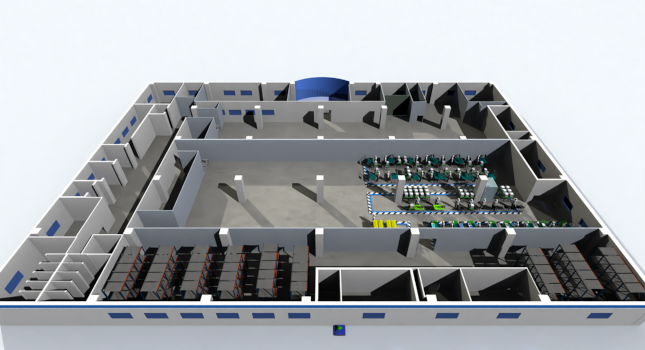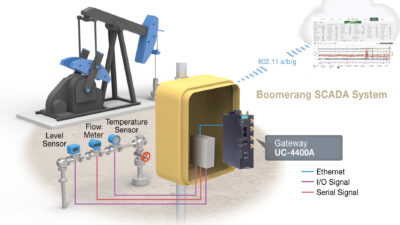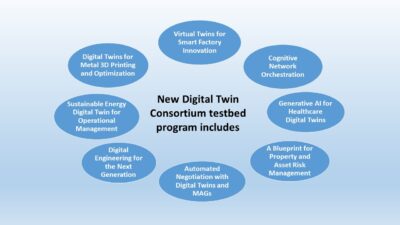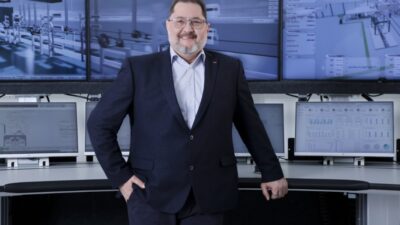By increasing visibility into a company’s manufacturing operations and testing an unlimited number of what-if possibilities in real-time, a digital twin can provide factories a reliable way to save time and money.

Learning Objectives
- A digital twin facilitates closed-loop innovation, meaning the virtual side collects data from the physical side, re-creates it and tests out the effects.
- Industrial factories are tightly integrated operations involving complex machinery. As such, altering one part of a process impacts many other parts, putting hundreds of variables in play.
- Digital twins can streamline forecasting and planning to reduce manual labor expenditures incurred when testing and measuring the downstream effects of changes to production operations.
Digital Twin Insights
-
While basic simulations have been around for a long time, digital twins provide a much more complete virtual environment by employing technologies that collect and process diverse data to develop a real-time link between the physical and digital worlds.
-
Processing cross-functional information from a diverse set of data sources allows any potential issues and defects to be calculated in real-time and enables corrections to be performed before production begins
-
To be used effectively, digital twins require an ample supply of high quality, actionable data, which manufacturers must pay careful attention to gathering and analyzing.
Manufacturers looking to gain ground on their digital transformations are often drawn to the idea of using simulations of their operations to gain visibility into their processes and improve efficiencies. However, in a multifaceted manufacturing setting, there is a more comprehensive and scalable option: Digital twins.
This next generation of digitization is being led by a first-of-its-kind simulation technology, which iterates trillions of “what if” scenarios to help unblock potential bottlenecks for a global workforce and allow organizations to gain deeper visibility into their operations.
Digital twin technology will move beyond the shop floor to digitize warehouses, materials and more. Digital twins are at the vanguard of advanced manufacturing, demonstrating the power to transform the industry for years to come, saving companies millions of dollars while improving operations and output.
What digital twins do
Simulations have been around for a long time and have been used for various purposes ranging from teaching pilots how to fly to modeling manufacturing production lines. However, digital twins take it to the next level by using a digital thread to replicate real-world environments within a virtual setting. By recreating space, time and matter, digital twins can demonstrate what happens in the physical world they’re modeled on in real-time.

Compared to standard simulations, digital twins provide a much more complete virtual environment by employing technologies that collect and process diverse data to develop a real-time link between the physical and digital worlds. In other words, a digital twin goes considerably further than a typical simulation in demonstrating how the assets in a complex environment interact.
Digital twins allow manufacturers to test production changes in a virtual environment by incorporating essential components traditional simulations do not. For example, in a manufacturing setting a digital twin can take into account IT systems and operations-related finance programs, fine-grained variables such as humidity and temperature, and physical features of a facility such as pipes or walls.
Processing cross-functional information from a diverse set of data sources allows any potential issues and defects to be calculated in real-time and enables corrections to be performed before production begins. These various sources of data provide deeper operational visibility, leading to better and quicker insights.
Digital transformation lessons learned
Industrial factories are tightly integrated operations involving complex machinery. As such, altering one part of a process impacts many other parts, putting hundreds of variables in play. Because of this, making any change becomes difficult, time-consuming and expensive. This requires plant operators to perform a lot of physical, trial-and-error work with machinery and employees to measure, test and try to improve the downstream effects of their actions.
Precise planning and forecasting are important when carrying out high-stakes production in fields such as medical device manufacturing. In one example, a digital twin of a factory was created to help produce a Class II diabetes product. The digital twin was able to accelerate and optimize the product’s development in only three weeks, an undertaking that often takes months or even years to complete.
Digital twins represent a groundbreaking step forward for simulations, but for them to return real value, they must be more than just a new technology. Digital twins should be part of an overall business objective, connecting to workflows and operating within the larger ecosystem and goals of the organization.
The basis of a good digital twin is good data, but good data is meaningless if it is not put to good use. Manufacturers must be prepared to take action and streamline operations to make use of the data and insights that digital twin simulations can provide.
Digital twin benefits for manufacturers
The payoffs of deploying a digital twin as part of a holistic effort to improve operations and deliver value to the company can be seen in two primary areas:
-
The top floor, where company leaders gain a greater understanding of their business landscape and how their products are performing.
-
The shop floor, where a comprehensive view of manufacturing operations allows changes to be tested and optimized.
By increasing visibility into a company’s manufacturing operations and testing an unlimited number of what-if possibilities in real-time, a digital twin provides a reliable way for factories to save time and money. Factory modeling can be used for different types of business purposes or technical reasons and can improve efficiency through the visualization, analysis and optimization of operations from anywhere in the world.
Digital twins are the future
A digital twin facilitates closed-loop innovation, meaning the virtual side collects data from the physical side, re-creates it and tests out the effects of any number of scenarios involving potential variables across the entire physical environment. This allows a plant to create a road map to improving physical efficiencies. This continuous synchronization is paving the way to the next generation of reality where the physical and digital worlds converge.

As digital twin technology continues to evolve and the intersection of devices and AI engines are built into advanced simulation software, it will unlock even greater predictive accuracy.
It all relies on the quality of the data, but with full-fidelity information and the ability to analyze test scenarios, digital twins can increase visibility across the environment, make predictive assessments of production-line changes and enable organizations to make better decisions about how to improve their operations.
Zohair Mehkri, Director of Engineering, Flex. Edited by David Miller, Content Manager, Control Engineering, CFE Media and Technology, [email protected].
Consider this
How could a digital twin simulation make production planning more flexible at your facility?



